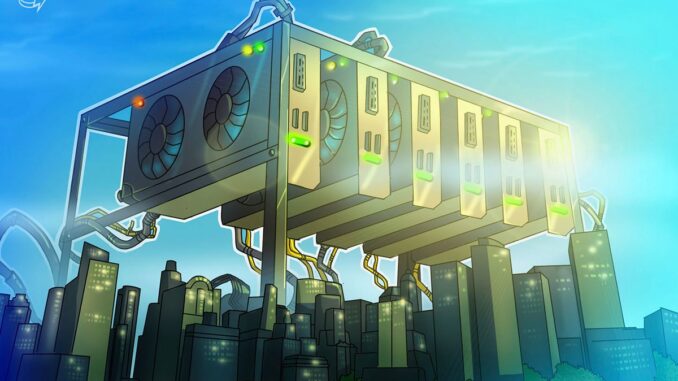
[ad_1]

Renewable Bitcoin mining firm Iris Energy is set to increase its total hash rate to 10 exahash per second (EH/s) in 2024 by acquiring new Bitmain T21 mining rigs.
The company announced that it had acquired an additional 1.6EH/s of Bitmain T21 miners, set for delivery in the second quarter of 2024. The company currently has 5.6 EH/s of operational capacity as of Dec. 2023.
The newest generation of Chinese manufacturer Bitmain’s mining hardware will also improve the efficiency of Iris’ operations from 29.5 joules per terahash (J/TH) to 24.8 J/TH. Iris invested $22.3 million in the latest order from Bitmain, pricing the hardware at $14 per terahash.
Related: Iris Energy to nearly triple hash rate with estimated 44,000 new BTC miners
Iris expects to bring 1.4EH/s of mining output by powering up a previous order of Bitmain S21 miners in the first quarter. It is also awaiting a different batch of Bitmain T21 miners, increasing its capacity by 1.3 EH/s.
Iris announced the 80MW expansion of its Childress data center operation in Texas in June 2023. The company has indicated that additional operational capacity will be delivered from Jan. 2024 onwards, allowing for the increase in operating hash rate up to 10EH/s as it receives new hardware from Bitmain.
The company also plans to build another 100MW of data centers at the site, which is made possible by providing an additional 500MW of power capacity that is already available to the operation.
While Iris has primarily been focused on Bitcoin mining, it has expanded its data center to service the growing demand for generative artificial intelligence (AI) computing. Iris invested $10 million in Aug. 2023 to buy 248 state-of-the-art Nvidia H100 GPUs, which were set to be delivered through the remainder of the year.
The company currently operates data center facilities in different sites across North America, including Canal Flats, Mackenzie, Prince George in Canada’s British Columbia, and its Childress site in Texas.
Iris maintains that its four operations make 100% use of renewable energy, with the respective data centers drawing power from a mix of wind, solar and hydroelectric power sources. A disclaimer on its website notes that its three Canadian sites draw 98% of power from renewables. The remainder of its energy use is offset by purchasing renewable energy certificates.
Magazine: Real AI & crypto use cases, No. 4: Fight AI fakes with blockchain
[ad_2]
Source link



